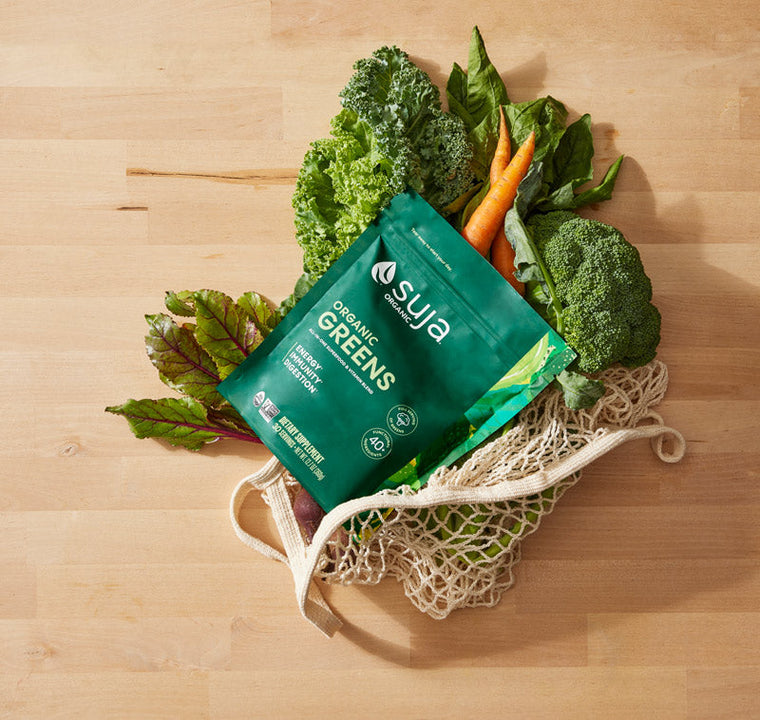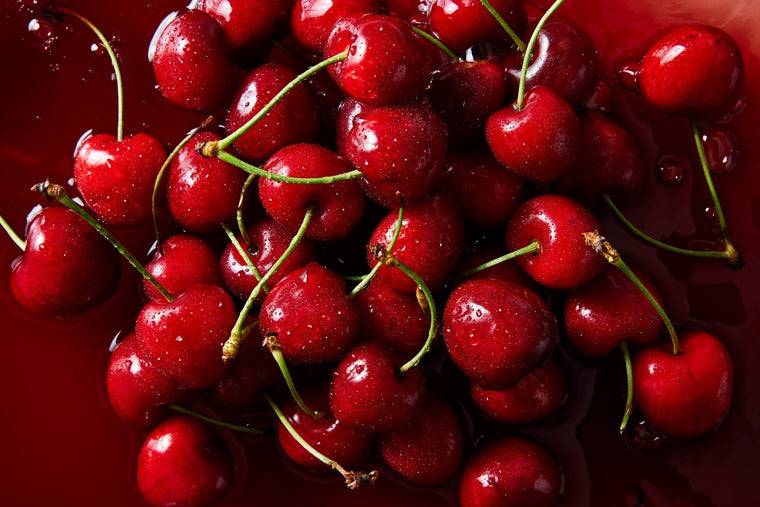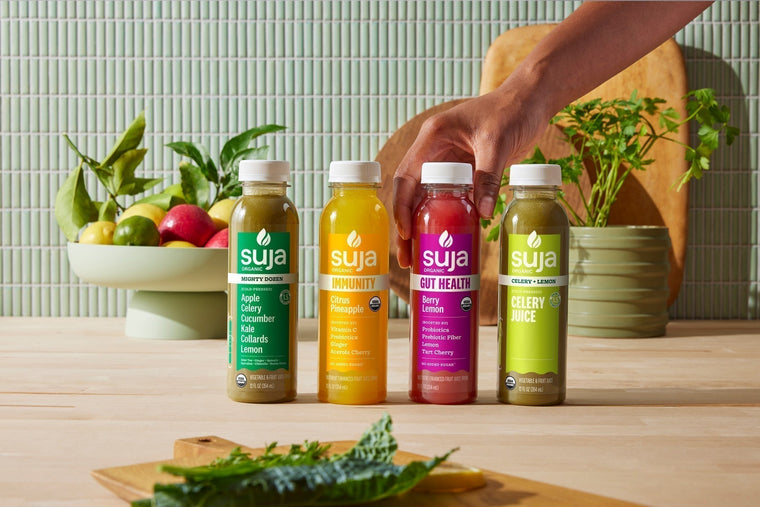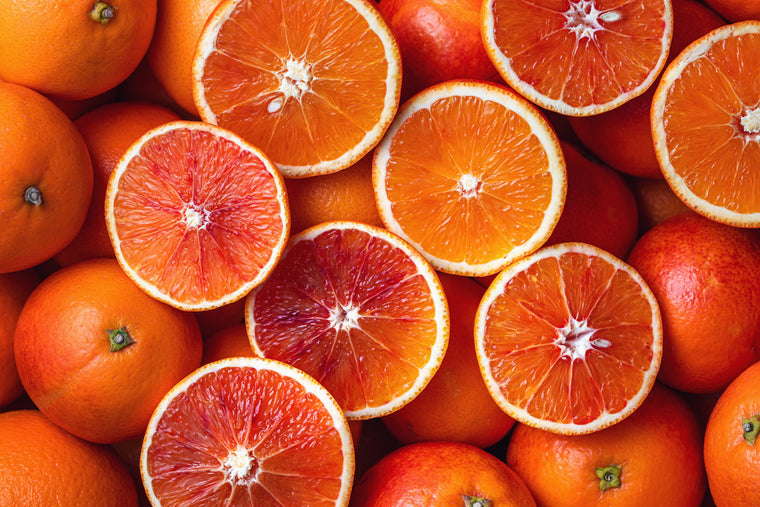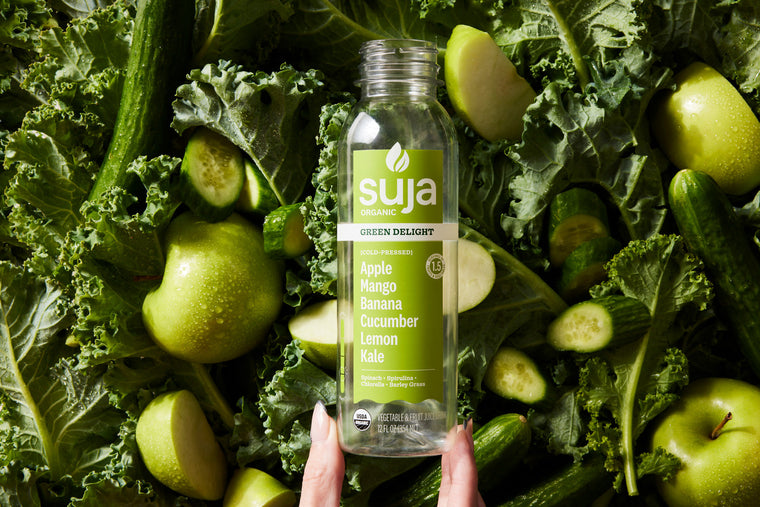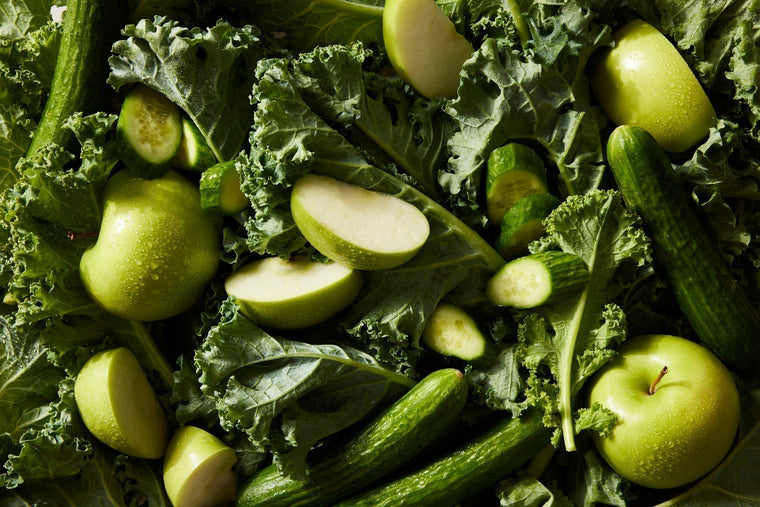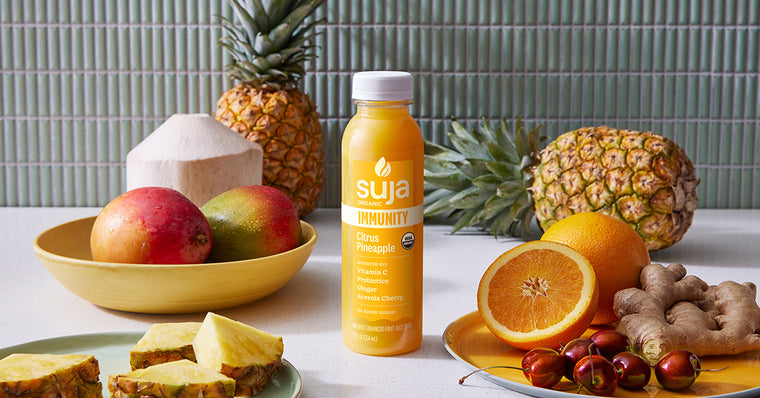Whether you blend it into a glowing green smoothie or assemble it into a simple salad with citrus vinaigrette, there’s no denying that here at Suja Organic, we’re simply KRAZY for kale due to its undeniable health benefits and versatility!
So what type of vegetable is kale exactly? By definition, it’s a cruciferous, dark green vegetable that just so happens to be part of the Brassicaceae family.1 In the past decade or so, kale has risen to fame for being jam-packed with antioxidants and fiber, as well as a litany of other key nutrients that can support overall wellness.
In just a moment, we’re going to take a deep dive into the benefits of kale, different types to look out for in the supermarket, and our range of organic, cold-pressed kale juices you can sip on all year long!
What are the Health Benefits of Kale?
Without any effort, kale just looks and tastes nutritious, but what are the true health benefits of adding it to your diet? Better yet, what are the benefits of juicing kale?
Let's take a closer look...

Terrific Source of Essential Nutrients
If there’s one vegetable that’s loaded with nutrients, it’s kale. It provides an exceptional source of essential vitamins, including A, B, C, K, and folate. On top of this, you also get calcium, iron, magnesium, and fiber, which can bolster your everyday wellness.2
High in Antioxidants
Kale is a powerhouse of natural antioxidants, including flavonoids and carotenoids. These compounds are well known for supporting overall wellness and helping your body manage everyday oxidative stress.3
Supports Digestion
Another krazy kale benefit is that it’s packed with fiber, which supports balanced digestion! Fiber not only impacts the rate of digestion, but also catalyzes the movement of waste through the colon.4
Bolsters Skin Health
With a tremendous amount of vitamin C, consuming enough kale can bolster your overall skin health! Vitamin C is known to ignite collagen synthesis and support healing properties, which can lead to radiant, glowing skin.5
Helps with Hydration
If you find yourself parched, kale can certainly help, especially when it’s juiced! Since kale naturally retains high water content, juicing it can contribute to overall hydration, especially when combined with other ingredients like cucumber or celery.
Potential Side Effects of Kale
Although this superfood star exhibits a plethora of health benefits, there are a few side effects to be mindful of.
- Potential Digestive Discomfort – Because of the high fiber content in kale, this could potentially cause digestive discomfort and bloating.
- Possible Allergies or Sensitivities – As with any food product or ingredient, some individuals may experience sensitivities, although very rare with kale. If you’ve never tried it before, it’s best to consume small amounts first or chat with a medical professional first.
Kale Juice Nutrition Data
| Nutrient | Amount per 1 cup (21g) of Kale |
|---|---|
| Total Calories | 7 |
| Total Fat | 0 g |
| Saturated Fat | 0 g |
| Trans Fat | 0 g |
| Cholesterol | 0 mg |
| Carbohydrates | 1 g |
| Dietary Fiber | 1 g |
| Total Sugars | 0 g |
| Added Sugars | 0 g |
| Protein | 1 g |
| Calcium | 4 mg |
| Potassium | 2 mg |
| Sodium | 11 mg |
| Iron | 2 mg |
| Vitamin A | 6 mcg RAE |
| Vitamin C | 22 mg |
| Vitamin D | 0 mcg |
*Nutritional information based on U.S. Department of Agriculture 6
Most Popular Types of Kale
Curly Kale
Famed as one of the most popular on our list, curly kale looks exactly like its name suggests. Its large leaves are quite ruffled, exuding a brighter green color that pops! The taste is a bit more on the bitter, peppery side. One of the major benefits of curly kale is its versatility—perfect in salads, smoothies, and juices.
Dinosaur Kale
Also known as Tuscan or Lacinato kale, this type radiates the texture of its prehistoric name—very bumpy and slightly longer than the rest! Compared to its curly friend, the dinosaur kale is a bit on the sweeter side.
Baby Kale
Known as a younger species of kale, baby kale showcases notably smaller, more round leaves, and is most commonly found in bagged salads at the grocery store. It’s definitely more on the mild side and a bit more tender.
When is kale in season?
The peak season for kale is typically September through April in most regions and tends to thrive in cooler temperatures.7
Siberian Kale
Bearing ruffled, light-green blue leaves with white stems, Siberian kale is noticeably flat with a taste that resembles cabbage. Just like baby kale, it’s very tender and ideal for cooking down into a savory, stovetop meal.
Red Russian Kale
From a visual perspective, this particular kale pops with bright purple veins and large blue-green leaves with whispers of red. Out of all the varieties, this one is the hardiest, with a mildly sweet flavor.
A Glimpse Into the ‘Kale Kraze’ Lineup at Suja
If you’re yearning to get on the kale juice nutrition bandwagon, we’ve got you covered, with our top three kale-forward sips!

1. 12 Essentials
Craving a robust green juice you can’t get enough of? Twelve Essentials blends the bold, earthy flavor of celery with a powerhouse medley of collard greens, kale, chard, and spinach. This krazy kale juice is perfectly balanced with refreshing mint tea and a zesty touch of lemon. Fuel your body with nature’s finest greens and feel the difference with every sip.
2. Green Delight
On the hunt for something equally sweet and nutritious? Green Delight combines the refreshing taste of apple, mango, and banana with powerful greens like kale, spinach, and spirulina. This vibrant blend also features cucumber and barley grass for an extra nutrient boost.
3. Uber Greens
Uber Greens delivers a well-balanced concoction of kale, spinach, tart citrus, and refreshing mint tea. Packed with all the benefits of leafy greens, this energizing and delicious juice is ideal for fueling your day with an abundance of nutrients!
4. Organic Greens Powder
Looking for the easiest way to add kale and other superfoods to your daily routine? Our Organic Greens Powder blends over 40 plant-based ingredients, including organic kale, spinach, broccoli, spirulina, and chlorella. With essential vitamins, minerals, prebiotics, and probiotics, it’s a simple way to support your wellness goals, one scoop at a time.
Take Full Advantage of Kale Juice
If you haven’t yet tapped into the full potential of kale, now’s the time. Packed with a wealth of antioxidants and vitamins, incorporating kale into your routine has never been easier. Whether you toss some fresh baby kale into a salad or enjoy it in the form of a convenient, organic cold-pressed juice, you’ll start reaping the rewards immediately!
*Disclaimer: This blog contains promotional content about our products. The information provided in this blog is for educational and informational purposes only and should not be construed as medical advice. While the nutritional information and health tips shared here are based on published studies and expert insights, they should not replace advice and treatment from a healthcare professional. Always consult a qualified healthcare provider with any questions you may have regarding a medical condition or health objectives.
Endnotes
- Matt, C. (2022, August 1). Brassicas (Brassicaceae) – Family | Home and Garden Education Center. https://homegarden.cahnr.uconn.edu/factsheets/brassicas-brassicaceae-family/
- Kale. (2018, February 26). The Nutrition Source. https://nutritionsource.hsph.harvard.edu/food-features/kale/
- Brauer, G. (2022, February 25). Food for Thought: Flavonoids & Carotenoids - UGA Dining Services. UGA Dining Services. https://dining.uga.edu/flavonoids/
- Live well to learn well. (2012). https://health.cornell.edu/sites/health/files/pdf-library/fiber-digestion-health.pdf
- Barney, A. (2022, November 30). The Benefits of Vitamin C for Your Skin. WebMD. https://www.webmd.com/beauty/ss/slideshow-benefits-of-vitamin-c-for-skin
- https://snaped.fns.usda.gov/resources/nutrition-education-materials/seasonal-produce-guide/kale
- Boeckmann, C. (2019, July 19). Kale. Old Farmer’s Almanac. https://www.almanac.com/plant/kale



